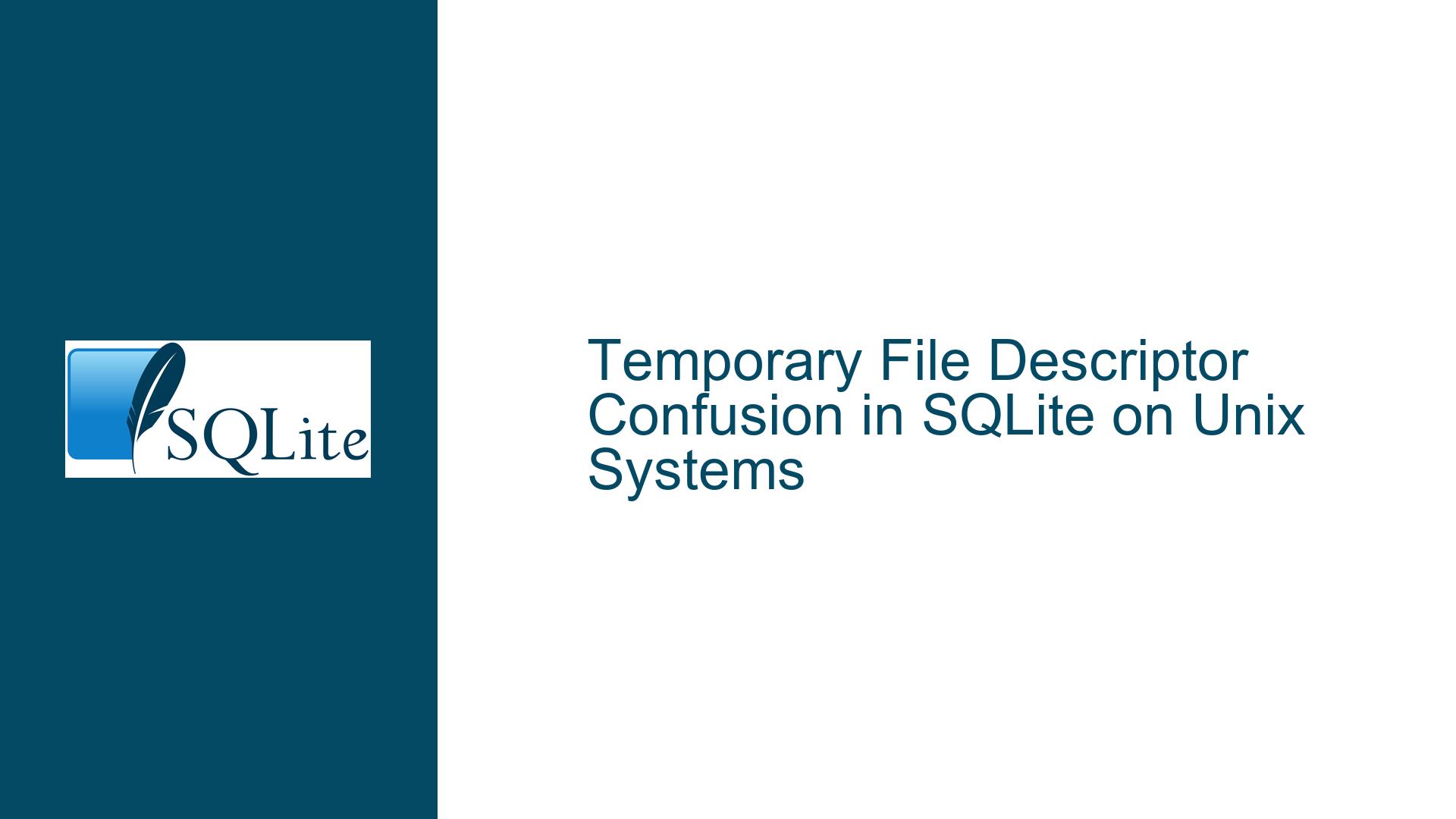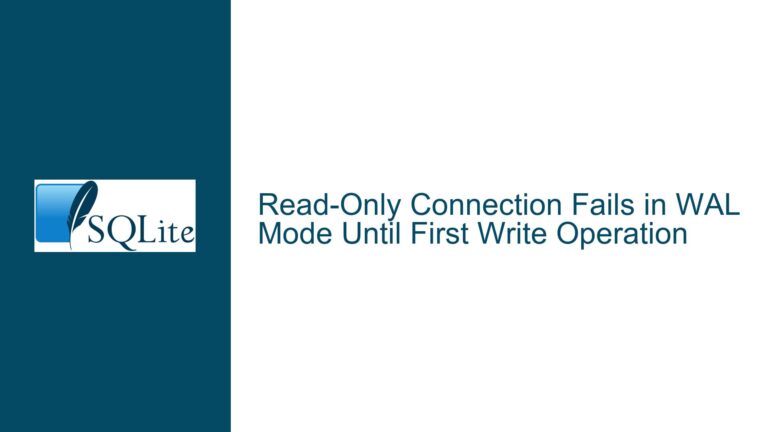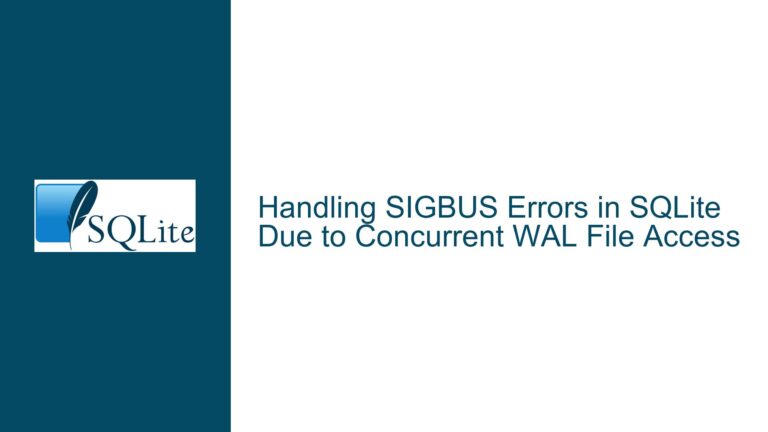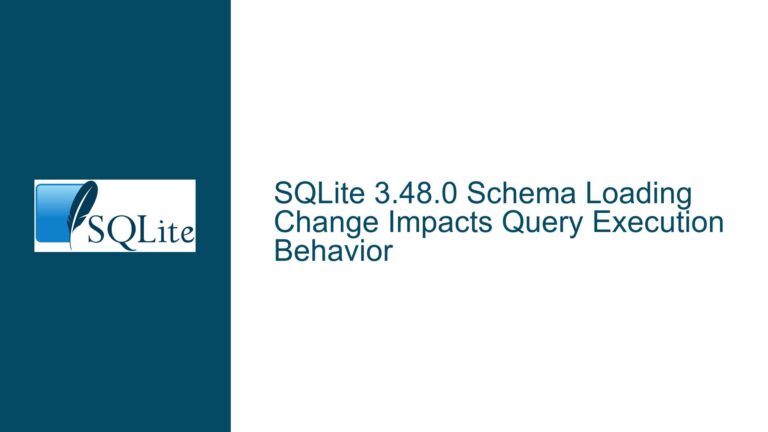Temporary File Descriptor Confusion in SQLite on Unix Systems
Issue Overview: SQLite’s MINIMUM_FILE_DESCRIPTOR Defense Mechanism and Temporary File Creation
SQLite employs a robust mechanism to prevent database corruption, particularly on Unix-based systems, by enforcing a minimum file descriptor value for temporary files. This mechanism, known as MINIMUM_FILE_DESCRIPTOR, is designed to avoid conflicts and corruption that can arise when file descriptors are reused or closed improperly. The issue at hand arises when SQLite attempts to create a temporary file for operations such as sorting during index creation. Under specific conditions, SQLite’s internal logic for handling file descriptors can lead to a "disk I/O error" when the file descriptor for the temporary file is incorrectly managed.
The problem manifests when SQLite tries to create a temporary file, closes it, and then reopens /dev/null to consume file descriptor 0. This sequence of operations can cause a conflict when SQLite attempts to create the temporary file again, as the file already exists, and the O_EXCL and O_CREAT flags are both set. These flags ensure that the file creation fails if the file already exists, leading to the observed error. The issue is particularly reproducible when the standard input (stdin) is closed during the execution of SQLite operations, as this action frees up file descriptor 0, which SQLite then attempts to reuse.
The core of the problem lies in the interaction between SQLite’s file descriptor management and the Unix file system’s behavior. SQLite’s defensive programming approach, while effective in preventing corruption, can inadvertently lead to this edge case when file descriptors are manipulated outside of SQLite’s control. This issue is specific to Unix-based systems, where file descriptors are managed in a way that allows for such conflicts to occur.
Possible Causes: File Descriptor Reuse and SQLite’s Defensive Mechanisms
The root cause of this issue is the reuse of file descriptor 0 after it has been closed, combined with SQLite’s defensive mechanisms to prevent database corruption. When SQLite creates a temporary file, it assigns a file descriptor to that file. If the file descriptor is closed and then reused for another purpose (such as reopening /dev/null), SQLite’s internal logic can become confused, leading to the "disk I/O error."
The issue is exacerbated by the fact that SQLite uses the O_EXCL and O_CREAT flags when creating temporary files. These flags ensure that the file creation fails if the file already exists, which is a safeguard against race conditions and file corruption. However, in this specific scenario, the flags cause the file creation to fail because the file descriptor 0 is being reused, and the file already exists.
Another contributing factor is the closure of stdin during the execution of SQLite operations. When stdin is closed, file descriptor 0 becomes available for reuse. SQLite’s internal logic attempts to use this file descriptor for temporary file creation, leading to the conflict. This behavior is specific to Unix-based systems, where file descriptors are managed in a way that allows for such reuse.
The issue is further complicated by the fact that SQLite’s defensive mechanisms are designed to prevent corruption, but in this case, they inadvertently cause a problem. The MINIMUM_FILE_DESCRIPTOR defense is intended to prevent the reuse of file descriptors that have been closed, but in this scenario, it leads to a conflict when file descriptor 0 is reused.
Troubleshooting Steps, Solutions & Fixes: Addressing File Descriptor Conflicts in SQLite
To address this issue, several steps can be taken to ensure that SQLite’s file descriptor management does not lead to conflicts. The first and most straightforward solution is to avoid closing stdin during the execution of SQLite operations. This prevents file descriptor 0 from being reused and avoids the conflict that leads to the "disk I/O error."
If closing stdin is necessary for the application, an alternative approach is to use the dup system call to duplicate file descriptor 0 before closing stdin. This ensures that file descriptor 0 remains in use and is not available for reuse by SQLite. The duplicated file descriptor can then be closed after SQLite operations are complete, ensuring that file descriptor 0 is not reused.
Another solution is to modify SQLite’s internal logic to handle the reuse of file descriptor 0 more gracefully. This can be achieved by adding additional checks to ensure that file descriptor 0 is not reused for temporary file creation. This approach requires modifying the SQLite source code and recompiling the library, but it provides a more robust solution to the problem.
For users who do not have the ability to modify the SQLite source code, a workaround is to use a different file descriptor for temporary file creation. This can be achieved by setting the SQLITE_TEMP_FILE environment variable to a file descriptor that is not likely to be reused. This approach ensures that SQLite uses a different file descriptor for temporary file creation, avoiding the conflict with file descriptor 0.
In addition to these solutions, it is important to ensure that the application using SQLite is properly handling file descriptors. This includes avoiding the closure of file descriptors that are in use by SQLite and ensuring that file descriptors are not reused in a way that could lead to conflicts. Proper file descriptor management is essential for preventing issues like the one described here.
Finally, it is important to note that this issue has been addressed in the SQLite source code with the fix provided in check-in c0cfe0582add8798. This fix modifies SQLite’s internal logic to handle the reuse of file descriptor 0 more gracefully, preventing the conflict that leads to the "disk I/O error." Users who are experiencing this issue should update to a version of SQLite that includes this fix.
In conclusion, the issue of temporary file descriptor confusion in SQLite on Unix-based systems is a complex problem that arises from the interaction between SQLite’s defensive mechanisms and the Unix file system’s behavior. By understanding the root causes of the issue and implementing the appropriate solutions, users can avoid the "disk I/O error" and ensure that SQLite operates correctly in their applications. Proper file descriptor management, careful handling of stdin, and updating to a version of SQLite that includes the fix are all essential steps in resolving this issue.





